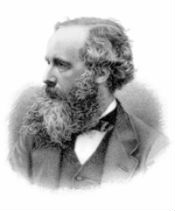
Child prodigy James Clerk Maxwell (1831-1879) showed how God and Science are not mutually exclusive.
An elder in the Presbyterian Church and a lover of strong Baptist preaching, Maxwell lives on not only in the equations that bear his name (which led to his picture adorning Albert Einstein's office) but his fame garnered a pop culture reference on the show "The Big Bang Theory."
Always ahead of his time, he announced in 1854 that Saturn's rings were accumulations of very small particles, which was finally confirmed by Voyager in the 1980s. Delivering his first scientific paper at age 14 and a member of the Royal Society at age 30, Maxwell's unification of light and electromagnetism in a single theory after an early friendship with Michael Farraday made possible our world of cell phones, television and electrocircuitry.
He is usually placed third in the list of all-star physicists behind Newton and Einstein (or was that Einstein and Newton?). "Let us follow the light," he famously said, believing unapologetically that Christianity was the only religion open to scientific investigation.